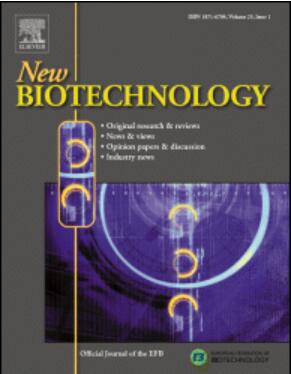Antibacterial and biodegradable PLA-based nanofibers loaded with natural phenolic monoterpenes for sustainable biomedical or food application
IF 4.5
2区 生物学
Q1 BIOCHEMICAL RESEARCH METHODS
引用次数: 0
Abstract
Antibacterial biodegradable PLA-based nanofibers loaded with phenolic monoterpenes - thymol, eugenol, carvacrol, and cinnamaldehyde, were prepared by electrospinning. The effect of bioactive molecule on the surface, thermal, morphological, and biological properties has been investigated about the potential pharmaceutical and food processing applications. Fiber diameters ranged from 320 nm for PLA fibrous mat up to 480 nm for PLA membrane with 6 % thymol. All the prepared active nanofibers exhibited hydrophobic surfaces with a slightly decreasing contact angle after the incorporation of phenols. Antimicrobial testing proved a strong efficiency against Escherichia coli and Staphylococcus aureus, depending on the specific type and content of the bioactive compound. A significant biofilm formation reduction of bioactive PLA nanofibers was revealed against tested microorganisms. Modification of PLA fibers with active molecules did not significantly affect the biodegradation kinetics in comparison to PLA samples with their absence. This study demonstrates the high potential of newly developed PLA-based/phenol nanofibrous membranes for use as antibacterial and antifouling systems applicable in wound dressings and food packaging.
通过电纺丝法制备了负载有酚类单萜--百里酚、丁香酚、香芹酚和肉桂醛--的抗菌可生物降解聚乳酸基纳米纤维。研究了生物活性分子对纤维表面、热、形态和生物特性的影响,以了解其在制药和食品加工方面的潜在应用。纤维直径从聚乳酸纤维毡的 320nm 到含 6% 百里酚的聚乳酸膜的 480nm 不等。所有制备的活性纳米纤维都表现出疏水表面,在加入苯酚后接触角略有减小。抗菌测试证明,根据生物活性化合物的具体类型和含量,纳米纤维对大肠杆菌和金黄色葡萄球菌有很强的抑制作用。生物活性聚乳酸纳米纤维对测试微生物的生物膜形成明显减少。与没有活性分子的聚乳酸样品相比,用活性分子修饰聚乳酸纤维对生物降解动力学没有明显影响。这项研究表明,新开发的聚乳酸基/苯酚纳米纤维膜极有潜力用作伤口敷料和食品包装中的抗菌防污系统。
本文章由计算机程序翻译,如有差异,请以英文原文为准。
求助全文
约1分钟内获得全文
求助全文
来源期刊

New biotechnology
生物-生化研究方法
CiteScore
11.40
自引率
1.90%
发文量
77
审稿时长
1 months
期刊介绍:
New Biotechnology is the official journal of the European Federation of Biotechnology (EFB) and is published bimonthly. It covers both the science of biotechnology and its surrounding political, business and financial milieu. The journal publishes peer-reviewed basic research papers, authoritative reviews, feature articles and opinions in all areas of biotechnology. It reflects the full diversity of current biotechnology science, particularly those advances in research and practice that open opportunities for exploitation of knowledge, commercially or otherwise, together with news, discussion and comment on broader issues of general interest and concern. The outlook is fully international.
The scope of the journal includes the research, industrial and commercial aspects of biotechnology, in areas such as: Healthcare and Pharmaceuticals; Food and Agriculture; Biofuels; Genetic Engineering and Molecular Biology; Genomics and Synthetic Biology; Nanotechnology; Environment and Biodiversity; Biocatalysis; Bioremediation; Process engineering.
 求助内容:
求助内容: 应助结果提醒方式:
应助结果提醒方式:


